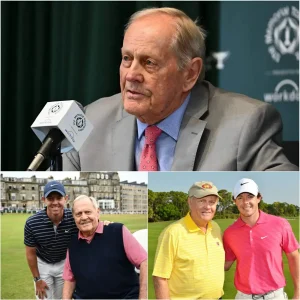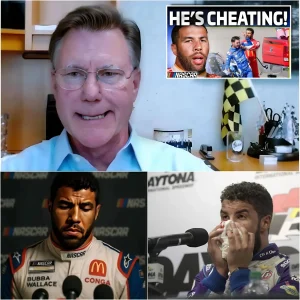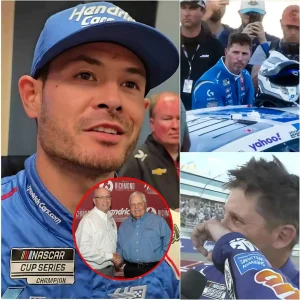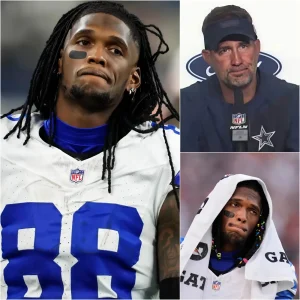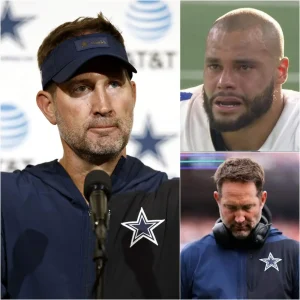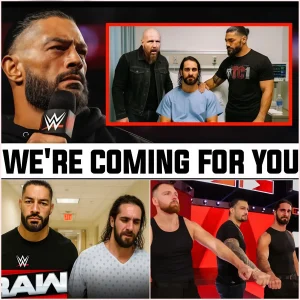In the heart of Phoenix Raceway, under the glaring lights of the NASCAR Cup Series finale, Kyle Larson crossed the finish line with a surge that echoed through the grandstands. The crowd erupted as confetti rained down, marking Hendrick Motorsports’ triumphant 15th championship. For fans, it was electric; for the team, it was redemption.
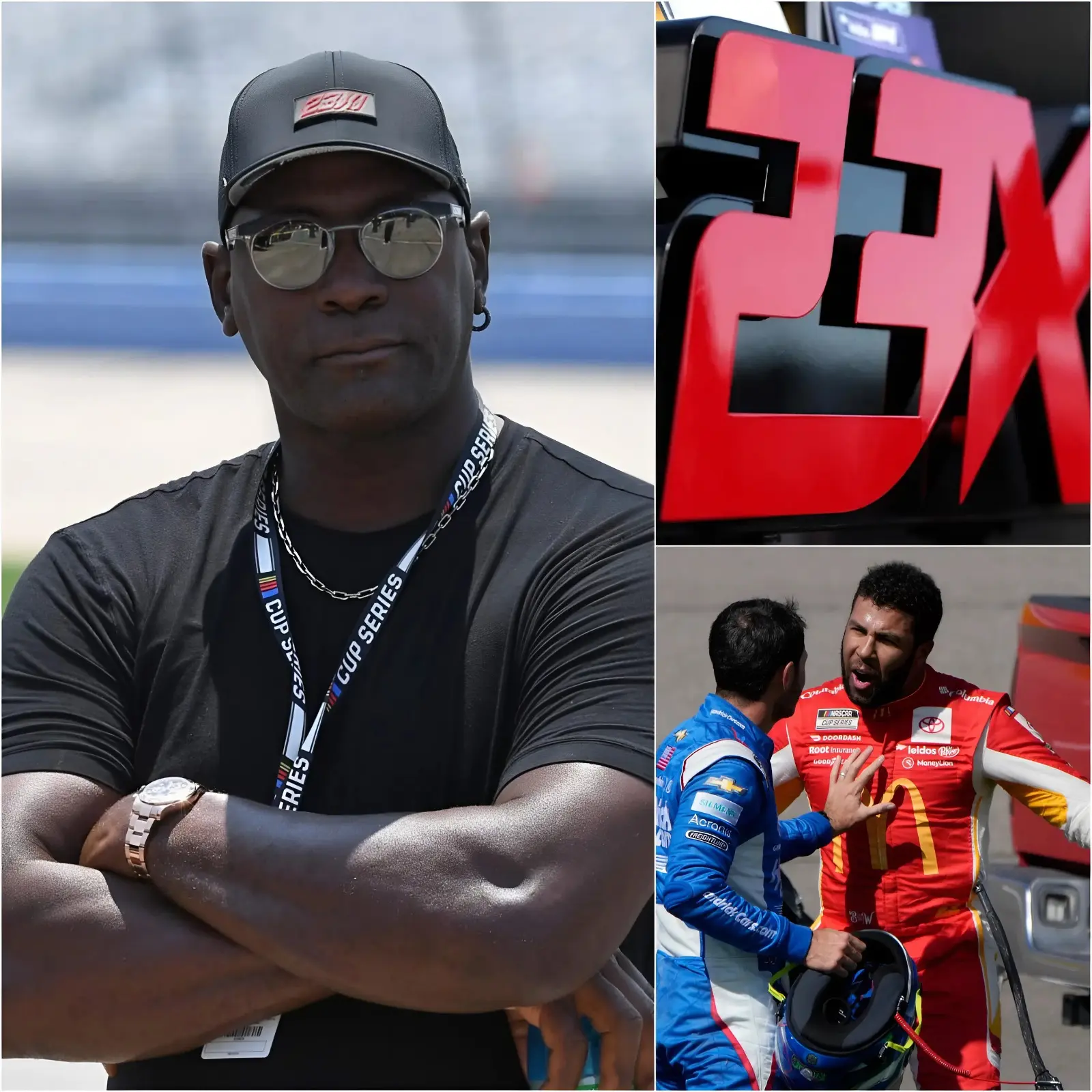
Rick Hendrick, the stoic patriarch of the organization, stood in victory lane, his eyes glistening with unbridled emotion. As Larson pulled up, engines still humming, Hendrick enveloped him in a bear hug that spoke volumes. Tears streamed down the 77-year-old’s face, a rare vulnerability from a man who had built an empire on calculated risks and unyielding drive.

“This one’s for all of us,” Hendrick whispered over the roar, his voice cracking like thunder in the distance. Larson, sweat-soaked and beaming, nodded, knowing the weight of those words. The victory wasn’t just about speed; it was a tapestry woven from decades of heartbreak, triumphs, and unbreakable bonds within the Hendrick family.

Larson had dominated the playoffs, clinching wins at Bristol and Martinsville that propelled him into the Championship 4. His No. 5 Chevrolet sliced through the field with precision, a testament to the engineering wizardry of Hendrick’s shops. Teammates Chase Elliott and William Byron cheered from the sidelines, their own seasons solid but overshadowed by Larson’s brilliance.
As the celebration unfolded, Hendrick recounted the journey in hushed tones to reporters. “We’ve lost so much—Ricky, the crash in ’04—but moments like this heal the soul,” he said, dabbing his eyes with a handkerchief. The 15th title tied NASCAR legends, but for Hendrick, it felt like poetry, a full-circle nod to his son’s unfulfilled dreams.
Larson, ever the racer’s racer, lifted the trophy high, dedicating it to the crew who toiled through sleepless nights. “These guys are my family now,” he shouted, his voice raw from post-race interviews. The air buzzed with champagne sprays and backslaps, a euphoric blur that masked the deeper currents of gratitude and relief.
Back at the team’s Charlotte headquarters, screens flickered with replays, staffers hugging strangers in the halls. Hendrick’s wife, Linda, watched from home, her own tears mirroring her husband’s. This championship, born from Larson’s dirt-track grit and Hendrick’s vision, bridged generations of racers who chased the checkered flag.
The next morning, as the adrenaline ebbed, Hendrick summoned his inner circle to a private briefing. Whispers of an announcement rippled through the garage—something unprecedented, tailored exclusively for their new champion. Larson arrived last, fresh from family calls, unaware of the seismic shift awaiting him.
In a sunlit conference room adorned with championship banners, Hendrick cleared his throat. “Kyle, you’ve given us everything and more,” he began, sliding a leather-bound folder across the oak table. The room fell silent; even Jeff Gordon, the vice chairman, leaned in with wide eyes. This wasn’t a standard extension—it was revolutionary.
Larson flipped open the document, his brow furrowing at the header: “Larson Legacy Initiative.” The terms unfolded like a dream: a 10-year deal through 2035, securing his seat in the No. 5 car with ironclad guarantees. No performance clauses, no buyouts—just pure commitment to his talent.
But the real stunner lay deeper: equity in Hendrick Motorsports, a 5% stake vesting over five years, tying Larson’s future to the team’s fortunes. “You’re not just driving for us; you’re owning a piece of the dream,” Hendrick explained, his voice steady now. Larson’s jaw dropped; he scanned the pages twice, disbelief etching his features.
The contract extended beyond the track. Hendrick pledged full sponsorship for Larson’s dirt racing endeavors, including a dedicated shop for custom chassis builds. No more juggling schedules or seeking waivers—this was freedom, a green light to conquer ovals and clay without compromise.
Financially, it was staggering: base salary eclipsing $15 million annually, plus bonuses tied to wins and fan engagement metrics. Endorsement carve-outs funneled 20% of Larson’s off-track deals back into team youth programs, fostering the next generation of drivers. It was philanthropy woven into prosperity.
Larson leaned back, rubbing his temples. “Rick, this… this is insane. No one’s ever done anything like this,” he stammered, glancing at his crew chief, Cliff Daniels, who nodded in stunned approval. The room erupted in applause, but Larson’s mind raced—could he live up to such faith?
Hendrick smiled faintly, recalling his own gambles. “I built this team on belief, Kyle. You’ve proven yours on the track; now let’s build legacies together.” The equity clause, he noted, included board voting rights after year three, giving Larson a voice in strategy sessions. It democratized the dynasty.
Word leaked within hours, igniting the NASCAR ecosystem. Social media exploded with envy and awe; Chase Elliott texted Larson a thumbs-up emoji, masking his own quiet admiration. William Byron joked in a group chat, “Save me some equity, bro!” while privately marveling at the blueprint.
Across the paddock, rivals processed the news with mixed awe. Denny Hamlin, fresh from a near-miss in the finale, quipped on his podcast, “Larson’s set for life—must be nice to be the golden child.” Yet beneath the banter, respect simmered; Hamlin knew Hendrick’s move redefined driver loyalty.
Joey Logano, the reigning champ from Penske, scrolled through headlines in his hauler. “That’s next-level commitment,” he admitted to reporters, his tone laced with envy. “Most of us grind year-to-year; Larson’s got a fortress now.” It highlighted the chasm between elite teams and the rest.
Even veterans like Martin Truex Jr. paused during a simulator session. “Hendrick’s playing chess while we’re checkers,” he reflected. The contract’s dirt-racing clause irked purists who prized NASCAR exclusivity, but Truex saw the genius—rewarding versatility in a sport craving stars.
Larson’s family gathered that evening in a quiet North Carolina diner, the folder propped like a trophy. His wife, Katelyn, squeezed his hand. “This means stability for our kids,” she whispered, eyes shining. Their three children, oblivious to the stakes, doodled race cars on napkins.
Reflecting alone later, Larson pondered the weight. From his 2020 suspension lows to this pinnacle, the arc felt surreal. Hendrick’s tears the day before weren’t just joy—they were absolution, a founder’s nod to a driver who’d risen phoenix-like. Gratitude swelled in his chest.
The deal’s youth initiative clause struck deepest: funding for diverse driver academies, inspired by Larson’s own outreach post-reinstatement. Hendrick Motorsports would sponsor 10 scholarships annually, targeting underrepresented talent. “Pay it forward,” the contract read, echoing Hendrick’s ethos.
Media frenzy peaked at a presser the following day. Larson, flanked by Hendrick, fielded questions with poise. “I’m humbled— this isn’t about me; it’s about trust earned,” he said. Cameras flashed as he detailed the equity, sparking Wall Street buzz about NASCAR’s investment appeal.
Analysts dissected the economics: Larson’s marketability—jersey sales up 40% post-title—made the stake a savvy bet. Hendrick’s vision? Elevate drivers from employees to partners, fostering retention in a free-agency era. It was disruptive, a blueprint for Ford or Toyota to chase.
Teammates rallied in a team meeting, Byron toasting, “To Kyle—the guy who made us all richer in spirit.” Elliott, ever philosophical, added, “This elevates us all; pressure’s shared now.” The garage hummed with renewed vigor, championships feeling within grasp again.
Ricky Hendrick’s shadow lingered in the subtext. The contract included a memorial fund boost, channeling proceeds to aviation safety research—a nod to the 2004 tragedy. Larson, who’d honored Ricky with paint schemes before, vowed to race with his spirit in mind.
As dusk fell over the Hendrick campus, Larson walked the shop floor, touching tools that birthed his championship car. Whispers of “legacy” echoed; this deal wasn’t ink on paper—it was immortality etched in chrome and carbon fiber.
Critics murmured of favoritism, but data silenced them: Larson’s 28 wins since 2021 dwarfed peers. Hendrick countered in an op-ed, “Talent like Kyle’s is rare; we invest in rarity.” The debate fueled headlines, but unity prevailed within the four-car empire.
Larson’s dirt schedule bloomed immediately—a Knoxville Nationals entry locked, with Hendrick transporters on standby. “No more apologies for loving dirt,” he grinned in a video drop. Fans cheered the authenticity, bridging stock car and sprint car worlds.
The contract’s finale clause stunned anew: post-retirement options, from ambassador to partial owner of a satellite team. At 33, Larson envisioned mentoring prodigies in his No. 5 livery. It was forward-thinking, securing Hendrick’s DNA for decades.
In quiet moments, Hendrick confided to Gordon, “Ricky would’ve loved this kid.” Tears welled again, but pride overpowered sorrow. The 15th title, the special pact—they were chapters in an ongoing saga, penned by visionaries who raced not just for glory, but for forever.
As the off-season loomed, Larson trained with renewed fire, the folder his talisman. NASCAR’s landscape shifted subtly; whispers of copycat deals stirred. But for now, in Hendrick’s glow, one truth reigned: championships heal, but legacies endure.
The sport watched, envious yet inspired. Larson’s stunned silence upon reading the terms? It mirrored every driver’s dream—a contract not of chains, but wings. In the roar of engines yet to come, Hendrick Motorsports revved toward horizons unbound.

